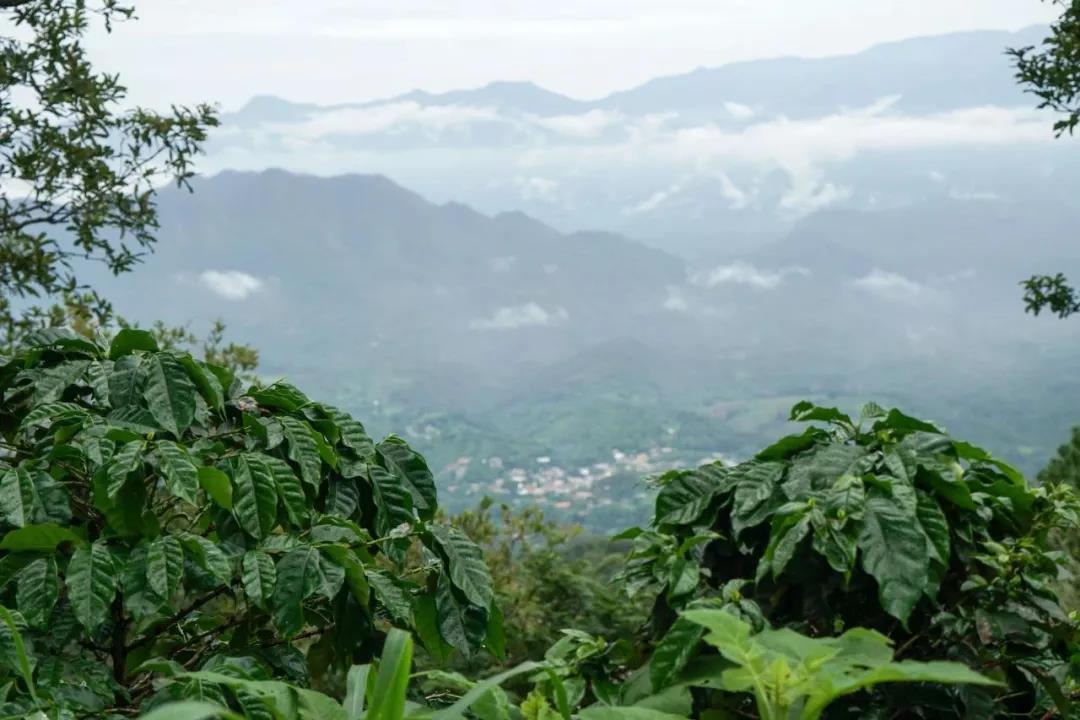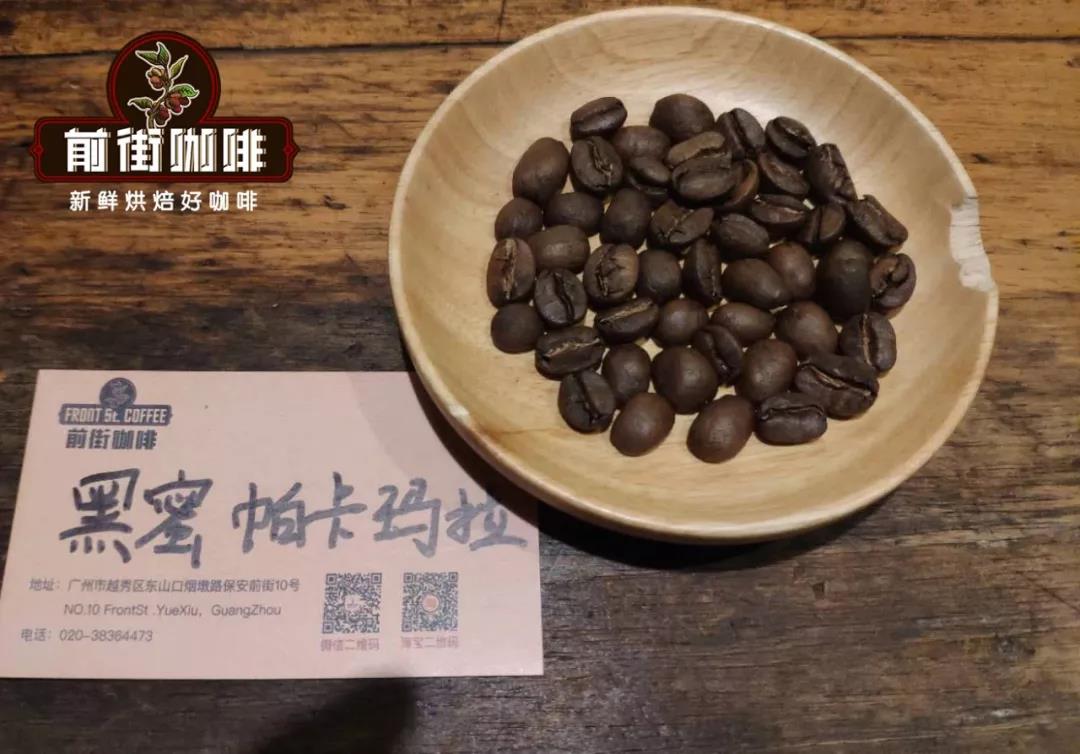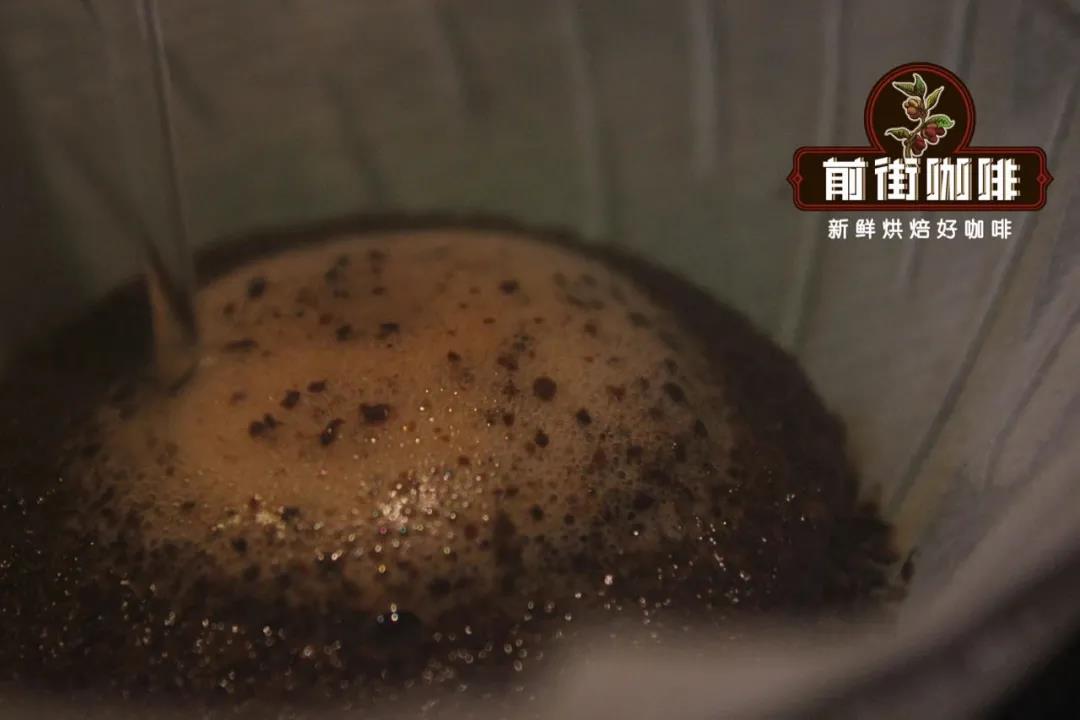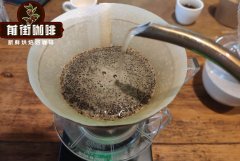El Salvador Boutique Coffee Region El Salvador Chocolate Lover Manor Coffee Brewing Flavor Features
Professional coffee knowledge exchange More coffee bean information Please pay attention to coffee workshop (Weixin Official Accounts cafe_style)
El Salvador, once the world's fourth-largest coffee producer, suffered decades of civil war that brought down the coffee industry. With the end of the civil war, the local people began to organize their long-abandoned farmland and replant batches of coffee trees. In recent years coffee trees have begun to harvest and Salvadoran coffee has come back to life. Recently, Qianjie has been constantly looking for coffee beans from many producing areas of El Salvador for roasting and cup testing. Through comparison, Qianjie feels that the characteristics of El Salvador coffee beans are mainly delicate, soft and sour, sweet and balanced taste, and the flavor is fresh.
Salvadoran coffee industry in trouble
Since its inception in the 19th century, coffee has rapidly become a major export product as the Salvadoran government turns its attention to lucrative new industries. By the 1930s, coffee accounted for more than 90% of the country's exports. Even after two world wars and a global recession, El Salvador remains among the top coffee producers.
It was not until after the civil war of the 1980s that land reform reversed the previous land policy and broke up the country's original system of large estates. The land reform policy and subsequent nationalization period destroyed the original structure and efficiency of the coffee industry in the country and almost broke the coffee trade in general. But even from then until 2000, coffee was still very profitable in the country.

In 2001, however, the Salvadoran coffee industry suffered a second major shock when coffee prices fell to $0.43 a pound. According to ICO data, El Salvador's production fell by more than 34 percent that year. As prices fell, the entire Salvadoran coffee economy collapsed, with producers and exporters defaulting on their debts to banks.
In addition to decades of political and price factors, El Salvador's coffee industry lacks uniformity. By 2013, an outbreak of leaf rust had occurred in El Salvador, and El Salvador's yield had dropped by 60% from 8.58 million bags (about 60-70kg per bag). Since 2014, while various private and government efforts undertaken in recent years have helped increase annual production by 7.5 per cent, there has been no effective measure to push production back into the seven-digit range. In 2016, the country's Ministry of Agriculture launched a new program to distribute 20 million rust-proof plants to smallholder farmers to further revive the country's coffee industry.
El Salvador coffee beans growing conditions
Geographically, El Salvador is located between Honduras and Guatemala, with the Pacific Ocean to the south, and the terrain is dominated by mountains and plateaus. El Salvador is known as the "country of volcanoes", volcanic areas rich in minerals, creating high-quality fertile soil, conducive to the cultivation of coffee trees. El Salvador coffee plantations are mostly planted in shade, and the harvest season is November to April.

There are currently 23,000 coffee growers in El Salvador, nearly 90 per cent of whom own farms of less than 17 hectares, and small and medium-sized farmers account for 80 per cent of the country's total production. In addition, some 15,000 smallholder farmers have formed 119 cooperatives that provide economic and social support to their families.
El Salvador
El Salvador coffee has eight major producing areas, roughly distributed in the volcanic ash covered mountain slopes or plateau areas at an altitude of 1,200 meters, November to April of the following year for coffee harvest and harvest season. Due to the mild climate of coffee, the coffee trees planted in El Salvador are mainly planted in the shade of high shade to avoid high temperatures and direct sunlight, which affects the quality of coffee beans. The coffee beans produced by it belong to Arabica species, mainly under the brands of Pakas and Bourbon, belonging to large beans, with sweet taste and excellent flavor.
Apeneca-Ilamatepec Mountains: Located in the western part of El Salvador, coffee flavor sweet, floral, chocolate, stone fruit, peach, cream flavor, citrus slightly sour and delicate taste, taste lasting, altitude 1000- 2,365 m.
Alotepec-Metapan Mountains: Located in the north of El Salvador, on the border with Honduras, it has excellent aroma, floral flavor, with chocolate, citrus and special sour caramel sweetness to neutralize, with obvious fruit flavor. Altitude: 1,000 - 2,000 m.
El Balsamo-Quezaltepec Mountains: Located in the southern foothills of the coastal mountains of La Libertad, El Salvador, approximately south of the cities of San Salvador and San Vincent. From Armenia Gorge to the west, until La Paz, another province in the northwest, this region coffee has an excellent balance of taste, creamy flavor, excellent concentration, vanilla aroma and bright acidity, full of very soft taste, altitude 1,000 - 1,960 m.

Chichotepec Volcano: Located in the heart of San Vincent, Salvador, it has a coffee aroma with orange floral notes and chocolate sweetness. Altitude 500 - 1,000 m.
Tecapa-Chinameca Mountains: Located between the city of San Miguel, the Lempa River and the Grande River, the slopes slope northward to the central valley area, and gradually descend to the coastal area southward. Very diverse taste, coffee mellow, aroma, acidity and sweetness have excellent balance, with chocolate, ripe fruit flavor, and sweet melon, apple, grape. Elevation 1,000m-2,139m.
Cacahuatique Mountains: Located in the east of Barrios, between the departments of San Miguel and Morazá, from the Torola Valley in the north, i.e. the mountains along the Honduran border, to the Torola Valley in the south and to the city of San Francisco Gotera in the east, the coffee in this region has a delicate fruit juice flavor, excellent taste, strong coffee flavor and almond aroma. Elevation 1,000 - 1,663 m.

Salvadoran fine coffee is concentrated in Santa Ana in the west and Chalatenango in the northwest, producing volcanic rocks at altitudes of 900-1500m. In recent years, the top ten cup competitions have almost come from these two producing areas.
Chalatenango: Located in the north-central part of El Salvador, in the inaccessible volcanic mountains, the soil is fertile and very suitable for coffee. Most of the coffee grown in this region is SHB very hard beans (this refers to coffee beans grown above 1400 MASL).
Santa Ana is considered to be a high-quality Salvadoran coffee producing area in recent years, mainly due to 1. the variability of the climate type 2. the drainage and fertility of the volcanic gravel soil. Altitude 1,000- 2,000 m.
Salvadoran coffee varieties
The main coffee varieties grown in El Salvador are Typica, Bourbon, Pacas and Pacamara.
Bourbon is a variant of the early iron pickup transplanted to Yemen, bean-shaped from thin and pointed to round. In 1715, France transplanted the round beans of Yemen mocha to Bourbon Island on the east coast of Africa (renamed Reunion after the French Revolution) before it was named Bourbon. Bourbon beans were introduced to Brazil and Central and South America in 1727, and in 1732 the British transplanted Yemeni mocha to St. Helena Island (where Napoleon was later imprisoned). Bourbon is the winner of the American Fine Coffee Cup test.

The oldest indigenous variety of tika in ethiopia. The top leaf of Tie-pica is bronze, the bean body is oval or thin and pointed, the flavor is elegant, but the constitution is weak, the disease resistance is poor, and the fruit yield is small. Jamaica Blue Mountain, Sumatra Mantning, Hawaii Kona and other high-quality coffee beans are iron pickup.
Pacamara varieties save Salvadoran coffee industry
Pacamara is a cross between Pacas and Maragogipe. It has the excellent taste of Pacas and the large size of green beans. The name is also a combination of the two, Paca+mara= Pacamara.
Pacas is the bourbon variety first discovered in El Salvador in 1949, and the elephant bean is the iron pickup variety first discovered in northern Brazil in 1870. In 1958, Salvadoran researchers made two coffee bean matchmakers, resulting in pacamara, which was heavier than pacas and elephant beans, but produced lower yields and larger beans.

Pakamara combines the advantages of both bourbon and iron pickup. Front Street believes that the biggest feature of this variety is sour and lively, sometimes biscuit, sometimes fruity, and excellent thickness and grease. In 2004, El Salvador's Pacamara won seventh place in the Extraordinary Cup competition; in 2005, he quickly grabbed second, fifth, sixth and seventh places; in 2006, he won second and third place; and in 2007, he won the top four places in one breath. From then on, El Salvador entered the Pacamara era. In the same year, Guatemala's champion bean was also the Pacamara variety, which was not inferior to Panama's Rose Summer Coffee.
Next, the front street uses 50% washed and 50% honey treated bourbon coffee beans from Chocolate Lover Estate in Santa Ana and black honey treated Pakamara coffee beans from Possedo Estate in Chalatango for roasting cup test and brewing comparison.
Coffee bean processing
Chocolate lover manor bourbon in the treatment method using honey treatment is to first coffee beans transported to about 800 meters above sea level honey treatment field to do treatment, in the lower altitude of the advantages of treatment is not easy to cloud here, sufficient sunshine, strong ultraviolet rays, so that coffee beans can absorb enough heat, showing a very good aroma, and in such a place to do honey treatment coffee, can be fully dried in a very short time, flavor can be more solid presentation. The washing process uses the rich water resources in this area to make the coffee appear very clean. The single manor coffee beans formulated in this way are specially named "Chocolate Lover" because the manor owner wants to express the flavor of chocolate, cocoa and stone cream.

Region: Santa Ana
Chateau: Chocolate lover's manor (El Guayabo)
Altitude: 1450m
Breed: Bourbon
Treatment method: 50% washing +50% honey treatment
Grade: SHB
Pakamara at Poseidor Manor uses black honey. Firstly, the freshly picked coffee fruits are screened, and the qualified coffee red fruits are selected and put into the peel removal machine for peeling treatment. This step retains almost all the pulp and pectin, and then the coffee beans with pulp are placed on an elevated drying bed for sun drying, during which the fermentation degree and humidity of coffee should be frequently detected. Dry the coffee beans to a moisture content of about 11%. The entire drying process takes about 18-25 days. Qianjie believes that black honey treated coffee beans have better flavor, sweetness and aroma.

Country of origin: El Salvador
Region: San Ignacio Los Pozos, Chalatango
Manor: Poseidon Manor
Altitude: 1500 m
Breed: Pakamala
Treatment: Black honey treatment
Front Street Coffee Roasting Advice
Chocolate lover manor bourbon baking: Yangjia 800N, baking volume 480g: furnace temperature 175℃ into the pot, fire 130, damper open 3; return temperature point 1 42", furnace temperature 130℃ when the damper open to 4; furnace temperature 152℃ when the bean surface becomes yellow, grass flavor completely disappeared, into the dehydration stage, damper open to 5;8 00", the bean surface appears ugly Hu wrinkles and black stripes, toast flavor obviously changed to coffee aroma, can be defined as a prelude to explosion, this time to hear the sound of a burst point, to 8 50"start a burst, damper unchanged, a burst after the development of 2' 00" minutes, 195.6℃ pot.

Pacamara Baking in Positou Manor: Yang Family 800N, baking capacity 480g: furnace temperature 175℃ into the pot, fire 130, damper open 3; return temperature point 142 ", furnace temperature 130℃ when the damper open to 4; furnace temperature 152℃ when the bean surface turns yellow, grass flavor completely disappeared, into the dehydration stage, damper open to 5;8 00", the bean surface appears ugly Hu wrinkles and black stripes, toast flavor obviously changed to coffee aroma, can be defined as a prelude to the explosion, at this time to hear the sound of the explosion point, to 8 50"to start an explosion, damper unchanged, after an explosion development of 2' 00" minutes, 195.6℃ pot.
Front Street Coffee Cup Test Report
Front Street Coffee will cup test the sample beans within 8-24 hours of roasting. The cup measuring bowl generally used by the front street coffee master has a capacity of 200ml ceramic bowl, which will be marked with 150ml and 200ml graduation marks. According to SCAA standards, the TDS of water is about 150ppm. Too low TDS will easily cause excessive extraction. Too high will affect the taste and easy to extract. The water temperature used in the cup measuring is 94°. According to SCAA's cup test standard, the grinding degree is controlled as No. 20 standard sieve (0.85 mm), and the pass rate is 70%-75%. Ratio: 11 grams of coffee powder plus 200 ml of hot water, that is, 1: 18.18, so that the extracted concentration is exactly in the range of 1.15%-1.35%, soaking time: 4 minutes.
Chocolate lover manor bourbon coffee bean cup test
Dry aroma: caramel, cocoa
Wet aroma: dark chocolate, nuts
Flavor: Cocoa, soft human fruit acids, caramel

Percido Manor Pakamara Coffee Bean Cup Test
Dry fragrance: caramel
Wet fragrance: berries
Flavors: Citrus, Grape, Honey, Berry
Front Street Coffee Brewing Experience
Filter bowl: V60 #01
Powder: 15g
Powder water ratio: 1:15
Grinding degree: BG 6m (No. 20 sieve pass rate 80%)
Water temperature: 90-91 degrees
For grinding degree, the front street is determined by sieving, according to the grinding recommendations provided by the American Fine Coffee Association SCA for hand brewed coffee, and the front street is combined with actual operation verification. If there is no sifter at home, the suggestion of Front Street Coffee is to observe the speed of water flow to judge, water flow fast is coarse powder, water flow slow is fine powder.

Qianjie Coffee adopts segmented extraction, also known as three-stage brewing: steam-steam with 30g water for 30 seconds, inject water in small circles to 125g for segmentation, continue to inject water to 225g when the water level drops to expose the powder bed, remove the filter cup when the water level drops to expose the powder bed,(steam-start timing) extraction time is 155 "-200."
Chocolate Lover Manor Brewing Flavor: Cocoa aromas with caramel sweetness, creamy texture, soft acidity, berry aftertaste.
Bosido Manor Brewing Flavor: Fresh acidity of citrus, orange, sweet and sour of grape, honey finish.
More fine coffee beans, please add private WeChat Qianjie Coffee, WeChat: kaixinguoguo0925
Important Notice :
前街咖啡 FrontStreet Coffee has moved to new addredd:
FrontStreet Coffee Address: 315,Donghua East Road,GuangZhou
Tel:020 38364473
- Prev

Introduction of Congolese coffee producing areas is Arabica or Robusta?
In the 1970s, the Democratic Republic of the Congo was one of the major coffee exporters in Africa. However, the civil war and political unrest that have continued since the 1990s have had a huge impact on the country's coffee industry. In addition to poverty and disease, conflicts have claimed 6 million lives and displaced thousands in recent years
- Next

Comparative Test of Coffee Powder Bowl what is the effect of IMS and VST coffee powder bowls on espresso extraction?
Espresso powder bowl: small but powerful. Therefore, although they have an important impact on extraction, they are often ignored. In fact, about half a year ago, VST's Vince Federer (Vince Fedele) first released his precision powder bowl in the coffee world-years later, other advances in specialty coffee equipment (such as the PID-controlled multi-pot coffee maker).
Related
- Beginners will see the "Coffee pull flower" guide!
- What is the difference between ice blog purified milk and ordinary milk coffee?
- Why is the Philippines the largest producer of crops in Liberia?
- For coffee extraction, should the fine powder be retained?
- How does extracted espresso fill pressed powder? How much strength does it take to press the powder?
- How to make jasmine cold extract coffee? Is the jasmine + latte good?
- Will this little toy really make the coffee taste better? How does Lily Drip affect coffee extraction?
- Will the action of slapping the filter cup also affect coffee extraction?
- What's the difference between powder-to-water ratio and powder-to-liquid ratio?
- What is the Ethiopian local species? What does it have to do with Heirloom native species?

